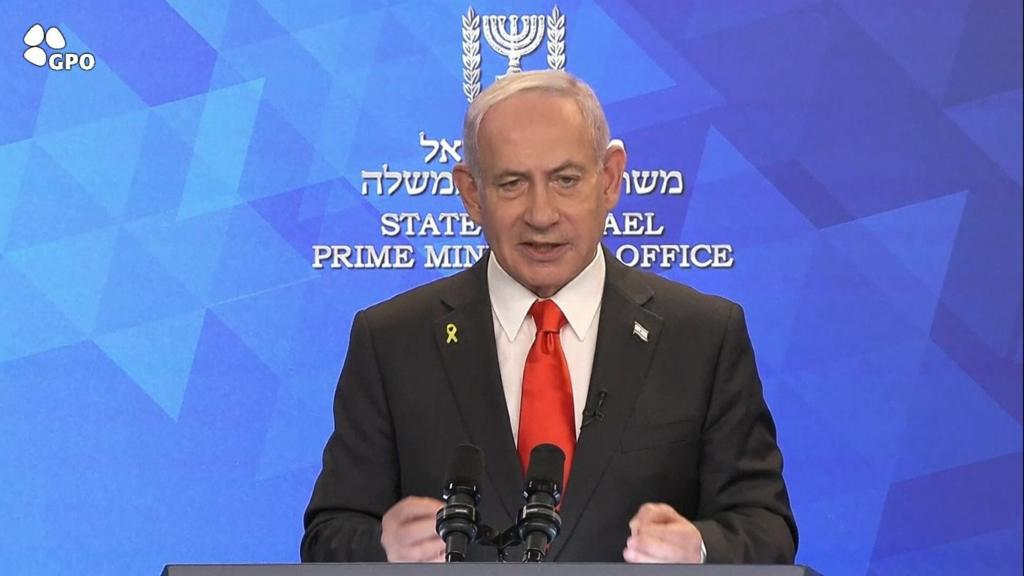
TEL AVIV, ISRAEL — After nearly two years of devastating conflict, a cautious sense of hope is beginning to emerge in the Middle East. Israeli Prime Minister Benjamin Netanyahu announced on Saturday that he “hopes to announce the release of all hostages from Gaza in the coming days,” a statement that could mark a major turning point in the long and brutal war between Israel and Hamas.
The remarks come ahead of indirect negotiations set to take place on Monday in Egypt, centered on a new U.S.-led peace plan aimed at halting the fighting, returning hostages, and beginning the long path to recovery in Gaza.
Here at Brackly News, we break down what this moment could mean for the region—and why it still hangs in a delicate balance.
The U.S. Plan at a Glance
The peace proposal, strongly pushed by President Donald Trump, lays out a phased roadmap:
- Hamas would release the remaining 48 hostages within three days.
- Israel would pause military operations, withdraw from much of Gaza, and release hundreds of Palestinian detainees.
- A massive increase in humanitarian aid and reconstruction efforts would follow.
- Eventually, Hamas would relinquish power and disarm—a condition it has not yet fully agreed to.
While Hamas has accepted parts of the proposal, it has requested more time for internal Palestinian dialogue before committing to full demilitarization.
President Trump, meanwhile, has urged urgency, warning, “Hamas must move quickly, or all bets are off.”
Related: Learn how the conflict reached this point on Brackly.com
A Cautious Optimism on the Ground
In both Israel and Gaza, people are clinging to hope, even as violence continues. Airstrikes in central and northern Gaza persisted on Saturday, killing at least 22 people, including women and children, according to local hospital officials. Yet, some residents reported a noticeable reduction in attacks, suggesting preparations for a temporary truce are underway.
In Tel Aviv, thousands attended a rally demanding the hostages’ release and an end to the war. Families of hostages expressed optimism not seen in months, stating:
“The prospect of seeing our loved ones return has never been closer.”
On the other side, in Gaza, the weariness is palpable.
“We are truly tired,” said Mohammad Shaat from Khan Younis. “We want a real truce, not just words.”
What Could Go Wrong?
While the current atmosphere shows promise, deep-rooted tensions remain. Netanyahu clarified that Israel will not fully withdraw from Gaza and will continue to maintain military control over key areas. His statement made it clear that Hamas must disarm either diplomatically or militarily.
Meanwhile, hardliners within Netanyahu’s own coalition—such as Bezalel Smotrich and Itamar Ben-Gvir—have voiced opposition to the plan, though they have not yet threatened to exit the government.
Security analysts are also skeptical.
“Hamas’ language has shifted, but their demands remain largely unchanged,” said Oded Ailam, a researcher with the Jerusalem Center for Security and Foreign Affairs.
The Bigger Picture
The upcoming negotiations also aim to resolve who will govern Gaza after the conflict. With Hamas potentially stepping aside, Arab mediators are encouraging a unified Palestinian leadership to step forward.
But even with peace talks progressing, the human toll remains staggering. Gaza’s Health Ministry reports that over 67,000 Palestinians have died since the war began, with around half believed to be women and children. While questions remain about exact figures, the United Nations and humanitarian organizations widely cite these numbers as the most reliable.
What’s Next?
All eyes are on Monday’s indirect talks in Egypt, where U.S., Egyptian, Israeli, and Palestinian representatives will negotiate the technical details of the deal. The world watches with cautious hope, knowing this moment—if handled carefully—could finally bring relief to countless families on both sides.
At Brackly News, we’ll continue covering this critical story and its unfolding impact on the region. For continued updates and human stories behind the headlines, visit Brackly.com.
Also worth exploring:
- Learn more about rebuilding war-torn communities
- Find out how you can support humanitarian relief in Gaza through Humanitarian Aid Now
© 2025 Brackly News. Reproduction without permission is prohibited.
Discover more from Brackly News
Subscribe to get the latest posts sent to your email.


